Recession? No Recession? This 8.2% Dividend Doesn’t Care
MSFT
+0.58%
Add to/Remove from Watchlist
Add to Watchlist
Add Position
Position added successfully to:
Please name your holdings portfolio
Type:
BUY
SELL
Date:
Amount:
Price
Point Value:
Leverage:
1:1
1:10
1:25
1:50
1:100
1:200
1:400
1:500
1:1000
Commission:
Create New Watchlist
Create
Create a new holdings portfolio
Add
Create
+ Add another position
Close
AAPL
+1.55%
Add to/Remove from Watchlist
Add to Watchlist
Add Position
Position added successfully to:
Please name your holdings portfolio
Type:
BUY
SELL
Date:
Amount:
Price
Point Value:
Leverage:
1:1
1:10
1:25
1:50
1:100
1:200
1:400
1:500
1:1000
Commission:
Create New Watchlist
Create
Create a new holdings portfolio
Add
Create
+ Add another position
Close
AMZN
+2.49%
Add to/Remove from Watchlist
Add to Watchlist
Add Position
Position added successfully to:
Please name your holdings portfolio
Type:
BUY
SELL
Date:
Amount:
Price
Point Value:
Leverage:
1:1
1:10
1:25
1:50
1:100
1:200
1:400
1:500
1:1000
Commission:
Create New Watchlist
Create
Create a new holdings portfolio
Add
Create
+ Add another position
Close
ETN
-0.41%
Add to/Remove from Watchlist
Add to Watchlist
Add Position
Position added successfully to:
Please name your holdings portfolio
Type:
BUY
SELL
Date:
Amount:
Price
Point Value:
Leverage:
1:1
1:10
1:25
1:50
1:100
1:200
1:400
1:500
1:1000
Commission:
Create New Watchlist
Create
Create a new holdings portfolio
Add
Create
+ Add another position
Close
The recession everyone’s been worrying about is a mirage—and there’s a good chance it won’t become reality for a time yet. That’s given us a nice momentum play in one closed-end fund (CEF) throwing off an outsized 8.2% dividend.
Here’s what I mean by “momentum” play: the stock market is only now waking up to the fact that the recession appears to be on ice for the foreseeable. Yet at the same time, those recession fears have left us with some terrific discounts in CEFs.
These “delayed reaction” buys—including the ticker we’ll discuss below—won’t last.
I say that because the signs are for continued market gains—even if the media is working overtime to tell us otherwise. Consider, for example, the latest jobs report, which helped drive the S&P 500 higher last week.
Jobs Boost Stocks
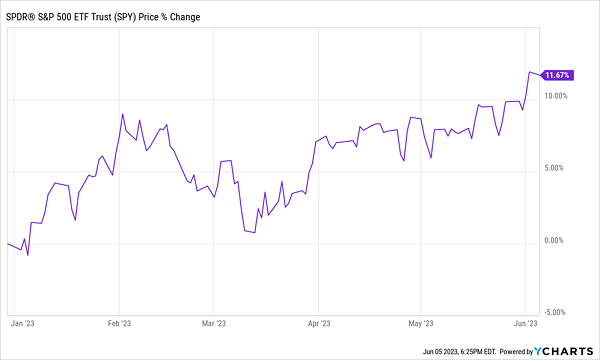 SPY-2023-Price-Change
SPY-2023-Price-Change
Last month, 339,000 jobs were added, far above the 190,000 economists were looking for. Yet unemployment rose to 3.7%, a sign employers aren’t scrambling for workers to the degree they were in 2021. That takes some of the heat off the Fed to continue rate hikes, as the tight labor market has been one factor driving up inflation.
In other words, we’ve got ourselves a pretty rare “Goldilocks” setup here.
Labor Market Recovering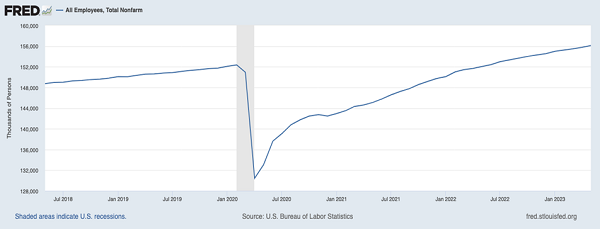 Strong-Labor-Market
Strong-Labor-Market
Of course, more jobs mean more workers with more money to spend. That’s why the S&P 500 is up over 10% this year, with more gains likely. Which brings me back to that much-ballyhooed recession—and why it still appears to be far out of sight.
Recession Fears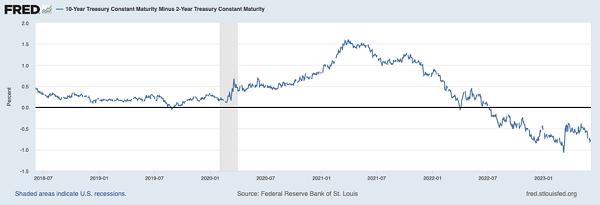 Treasury-Inversion
Treasury-Inversion
Back in April 2022, the US Treasury yield curve inverted, with the yield on the 2-year climbing higher than that of the 10-year. This is important because every time it’s happened in the past, a recession has ensued. Hence the stock selloff last year, as everyone tried to get ahead of said recession.
Except more than a year later, well, we’re still waiting—and there’s no sign a recession is in the cards.
GDP Gains Still Strong
The US started 2023 with 1.3% GDP growth—not huge, but not bad, either. And that was much better than the two GDP declines we saw in early 2022.
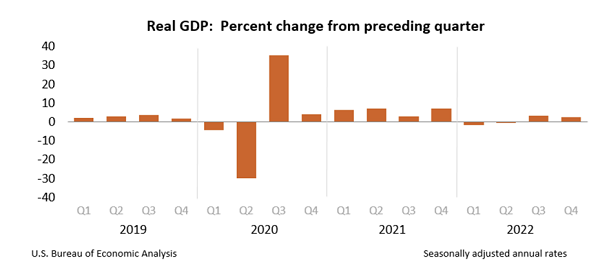 Real-GDP-Chart
Real-GDP-Chart
While the economy did contract for two consecutive quarters in early 2022, meaning the US experienced a technical recession for those six months, it’s been expanding since, and the recent jobs report shows it will keep doing so.
Rising Wealth Nationwide GDP-Climbs
GDP-Climbs
Perhaps the inverted yield curve, which has been a reliable indicator of recessions going back to the 1970s, showed up the recession instead of slightly before, as in the past. When you’re dealing with unprecedented global economic shutdowns, anything’s possible.
Still, a close look at the data shows we’re nowhere near a recession, which explains why the tech-heavy NASDAQ has outpaced the Dow and the S&P 500 this year:
Risky Stocks Soar the Most QQQ-Leads-2023
QQQ-Leads-2023
And with the NASDAQ still well off its 2021 highs, it’s not too late to get in here.
We can give ourselves some extra upside by going with a closed-end fund (CEF) with a bias toward tech: the Eaton (NYSE:ETN) Vance Tax-Managed Diversified Equity Income Fund (ETY), whose top holdings include Microsoft (NASDAQ:MSFT), Apple (NASDAQ:AAPL), Amazon (NASDAQ:AMZN) and Meta Platforms (META).
ETY holds about a quarter of its portfolio in tech, which is its highest allocation, but its next three-biggest sectors—health care, financials and consumer discretionary stocks—remain oversold, despite this year’s market rally.
This means that overall, ETY gives us a “one-stop” buy for gains and high dividends in the current market. Better still, the fund is a bargain, having fallen to a 2.9% discount to net asset value (NAV, or the value of its underlying portfolio) from the premium at which it started the year.
ETY’s Suddenly Attractive Price Point ETY-Discount-NAV
ETY-Discount-NAV
The discount is small, but that’s fine. ETY has traded at a 10% premium in recent years and at a 5% premium a few times before that, so we’ve still got a nice entry point here.
One other thing: ETY sells call options on its portfolio, which provides extra income to fuel that 8.2% payout. This strategy does, however, hold down the fund’s gains in a rising market, as the stocks on which it sells options are “called away.” This is why ETY has tracked the S&P 500 in the last three years, despite its tech-stock lean:
Turning Market Gains Into Cash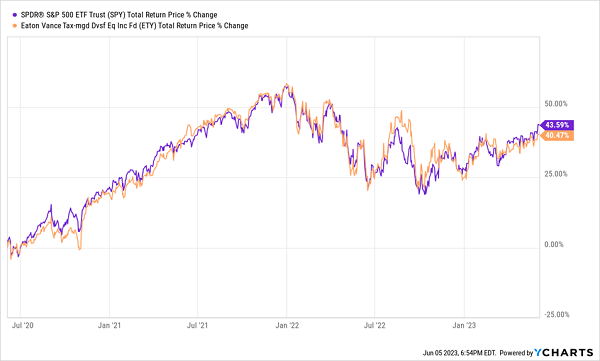 ETY-Total-Returns
ETY-Total-Returns
This essentially means ETY is converting the market’s return into dividend cash with its 8.2% payout, which is a far better proposition than, say, holding a low-yielding index fund. Add in the unusual discount and you can see why ETY is a smart short- to medium-term buy now.
Disclosure:


